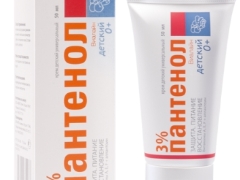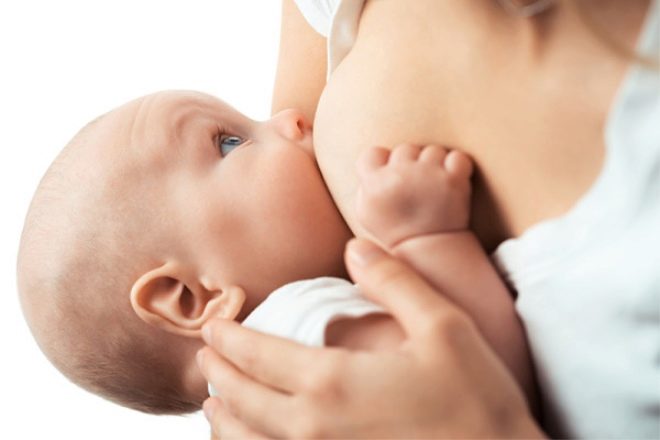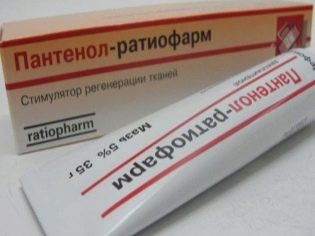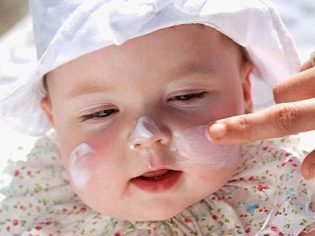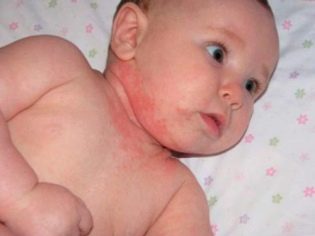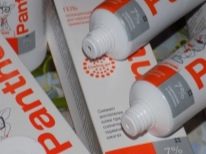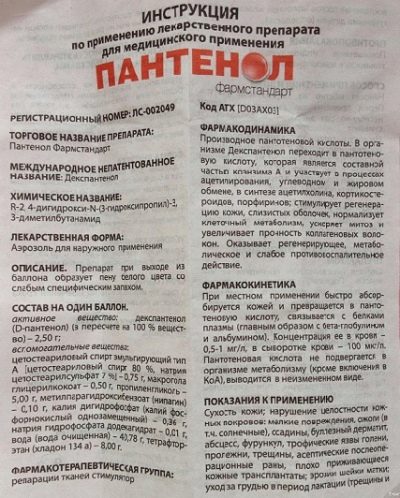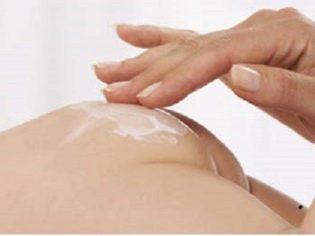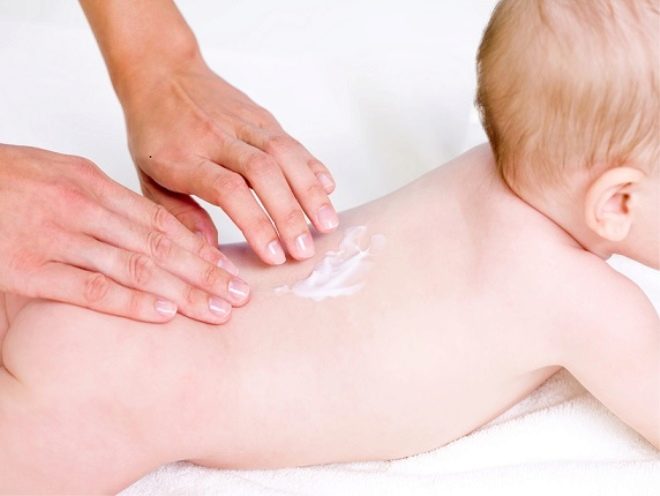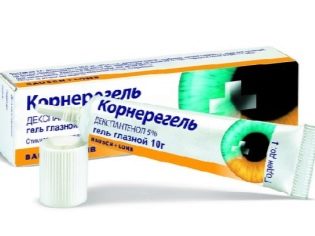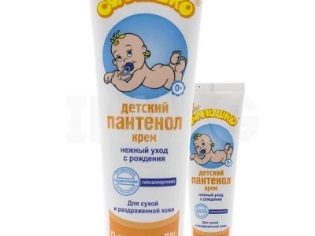Panthenol for children
Panthenol is in demand for various skin lesions and is often used by young mothers with nipple cracks. Is such medicine permitted in childhood, how does it affect the skin of a child and what analogs can it be replaced with?
Release form and composition
Panthenol presented in pharmacies such forms:
- Spray can. As an active ingredient, it contains dexpanthenol at a concentration of 5%. Additionally, the preparation contains propylene glycol, sodium hydrogen phosphate and some other substances. Such medicine is produced in aluminum containers, supplemented with a spray nozzle. The weight of the aerosol in one container is 58 or 116 grams. After contact with the skin, such an aerosol becomes a white foam, which has an unexpressed specific smell.
- Ointment. Its main ingredient is also dexpanthenol, which is contained in 100 g of the drug in an amount of 5 g (the concentration in this form also amounts to 5%). The drug looks like a thick yellow mass that smells like lanolin. It may have a greenish or brown tint, and the ointment is packaged in aluminum tubes of 25, 30, or 50 grams. Auxiliary components of such drugs are liquid paraffin, emulsion wax, cetosteryl alcohol, anhydrous lanolin and petroleum jelly.
Operating principle
Both forms of panthenol have an anti-inflammatory effect due to the conversion of the active substance of the drug (dexpanthenol) to pantothenic acid. This acid is important for many metabolic processes, the formation of acetylcholine and other substances. Panthenol Application activates tissue regeneration, therefore such a medicine accelerates skin healing if it is damaged. In addition, dexpanthenol moisturizes the skin and does not allow the skin to dry.
Indications
Panthenol is used if the child has such skin problems:
- Severe dryness
- Diaper dermatitis.
- Minor thermal burns.
- Diaper rash.
- Irritation on the skin (contact dermatitis, prickly heat).
- Sunburn
- Scratches.
- Abrasions
- Allergic dermatitis.
- Cheeses frostbite.
- Sores on the skin.
- The bedsores
- Shingles.
Also, the medication can be used to soften the skin, the rapid healing of chickenpox bubbles, bruises or insect bites. The drug has shown itself well in the treatment of cracks and chapping of the lips.
From what age is prescribed?
External use of Panthenol does not harm a child of any age, so the drug can be administered to even a baby up to a year, for example, if the crumbs are irritated after a long stay in the diaper.
Contraindications
The use of Panthenol is prohibited only in the case of individual hypersensitivity to any of the components of the drug. Besides, do not treat skin with Panthenol if it is infected.
Side effects
In some children, the use of Panthenol can lead to urticaria, erythema, itching, or other allergy symptoms. When they occur from further use of the drug need to refuse.
Instructions for use
Panthenol is used exclusively for external processing. The drug is applied once or more often, given the evidence. Baby skin treatment is most often carried out during a diaper change or after bathing. If an ointment is used, it is gently rubbed until the mass is completely absorbed.When treating skin lesions on the face, it is important to prevent the drug from getting into the eyes.
Spray Panthenol most often choose with burns or woundsSince such a preparation additionally cools and provides a more gentle treatment. Before using such a medicine, the balloon is shaken and kept vertically during processing. Spray the spray should be evenly from a distance of 10-20 centimeters, pressing the nozzle for a few seconds.
The foam that appears on the skin soon disappears and leaves a thin film that will protect the damaged area from fluid loss. This treatment is recommended. several times a day (frequency depends on the severity of skin changes).
The duration of use of any of the forms of Panthenol is not limited in time - the skin is treated until complete healing.
Overdose and interaction with other drugs
Cases of negative effects of an excess of Panthenol on the skin of the child did not occur. There is no information from the manufacturer about the incompatibility of the ointment or aerosol with other medicines.
Terms of sale and storage
Both ointment and aerosol can be freely purchased at most pharmacies, since these products are OTC. Shelf life ointment is 5 years, aerosol - 2 years. Storage Panthenol is recommended at room temperature out of the reach of small children. The average price of an aerosol weighing 116 g is 220 rubles.
Reviews
Often, parents who used Panthenol for skin diseases in their children, praise this medicine for its good healing effect.
Moms love that this product is safe for babies of any age and does not contain dyes or preservatives.
According to parents, it is very convenient to apply the ointment - the drug is easily applied and washed off, and does not leave stains. Aerosol is an excellent choice for treating wounds or burns. Only in rare cases after skin treatment does the child develop an allergy. In most cases no negative reaction to panthenol occurs.
Analogs
Any other drug based on dexpanthenol can become a replacement for Panthenol, for example:
- Bepanten. This is one of the most famous analogues of Panthenol, produced in two forms - ointment and cream. Ointment is often chosen for the treatment of cracks and diaper rash, and the cream is in demand in situations where the skin is irritated, reddened or very dry. Among the shortcomings of Bepantin, only its rather high cost is noted.
- Panthenol-powder for children. This tool from the company "Pharmakom" contains 2% dexpanthenol, as well as talc, starch and zinc oxide. Powder is available in different volumes (from 50 to 150 g) and is recommended for the preventive treatment of the skin of babies.
- Pantoderm. This ointment effectively deals with dryness and minor skin lesions. It contains dexpanthenol in a concentration of 5% and is sold in tubes of 25-30 g.
- D-Panthenol. This drug is presented in the form and ointment, and cream. It is sold in tubes of 25 and 50 grams and is used in the treatment of diaper dermatitisdiaper rash, scratches and other problems.
- Korneregel. This drug dexpanthenol is produced in the form of an eye gel, so it is prescribed for keratitis, burns and eye injuries.
- Dexpanthenol. This yellow 5% ointment is often chosen as an analogue of Panthenol for the treatment of various skin lesions, since it is effective and has an affordable price.
- Therapeutic Milk by Dr. Muller Pharma. This tool is sold in bottles of 100 g and contains 3% panthenol, supplemented with allantoin and vitamin E. It is recommended for sunburn, dermatosis and wounds.
- Panthenol-Teva. This drug is available in Israel only in the form of an ointment with a 5% concentration of dexpanthenol in tubes of 35 g each. The drug is used for burns, dermatitis, postoperative wounds and other superficial skin lesions.
- Dexpanthenol-Hemofarm. This Serbian medicine is a 5% homogeneous yellowish or white ointment in tubes of 30 g each.
- "Panthenol Pharmstandard".Such a medicine is represented by a 5% aerosol, therefore it is in demand to replace Panthenol in the same dosage form. One cylinder contains 58 g of the drug.
- Cream "My sunshine" with panthenol. It is available in 100 ml tubes and is in demand for treating the skin of newborns with excessive dryness or irritation.
Review the doctor about the drug, see the following video.
